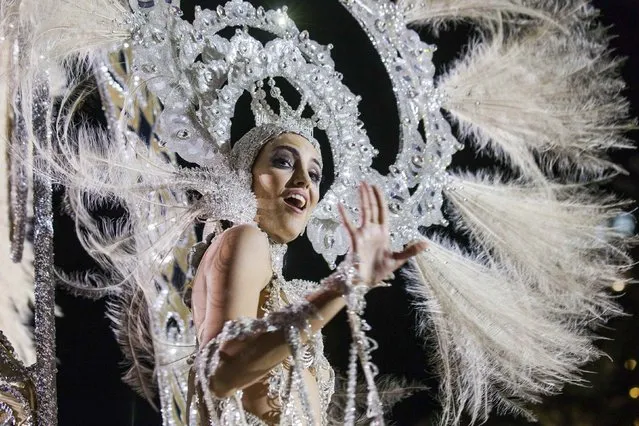
Aranzazu Estevez, wearing a creation called “La princesa de las mil rosas” (the princess a thousand roses), performs on stage during the Carnival Queen ceremony in Las Palmas, capital of the Spanish Canary Island of Gran Canaria, February 13, 2015. (Photo by Borja Suarez/Reuters)
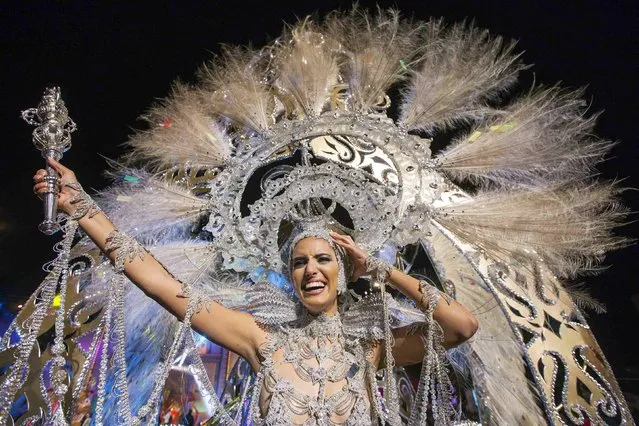
Aranzazu Estevez, wearing a creation called “La princesa de las mil rosas” (the princess of a thousand roses), reacts after being elected Carnival Queen in Las Palmas, capital of Spanish Canary Island of Gran Canaria, February 14, 2015. (Photo by Borja Suarez/Reuters)
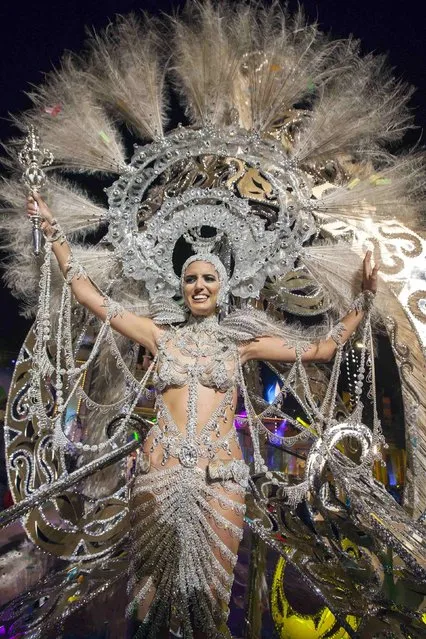
Aranzazu Estevez, wearing a creation called “La princesa de las mil rosas” (the princess of a thousand roses), reacts after being elected Carnival Queen in Las Palmas, capital of Spanish Canary Island of Gran Canaria, February 14, 2015. (Photo by Borja Suarez/Reuters)
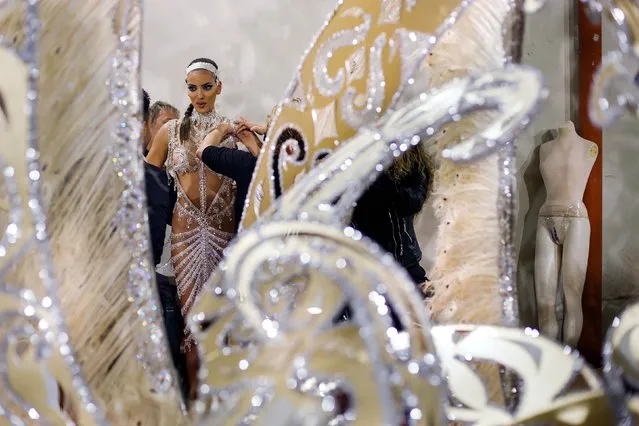
Aranzazu Estevez is helped backstage before winning the the Carnival Queen ceremony in Las Palmas, capital of the Spanish Canary Island of Gran Canaria, February 13, 2015. Picture taken on February 13, 2015. (Photo by Borja Suarez/Reuters)
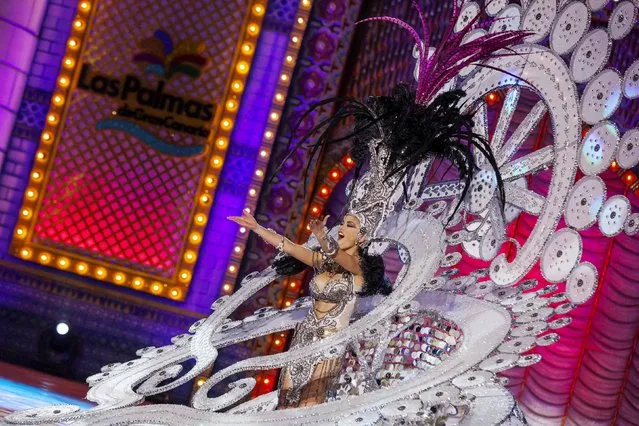
Carolina Cruz, wearing a creation called “Donde los suenos no tienen fin” (where dreams never end), performs on stage during the Carnival Queen ceremony in Las Palmas, capital of the Spanish Canary Island of Gran Canaria, February 13, 2015. (Photo by Borja Suarez/Reuters)
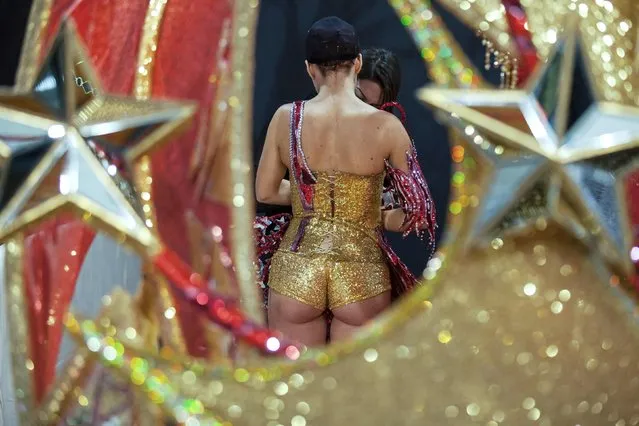
Virginia Leon is helped backstage before performing at the Carnival Queen ceremony in Las Palmas, capital of the Spanish Canary Island of Gran Canaria, February 13, 2015. (Photo by Borja Suarez/Reuters)
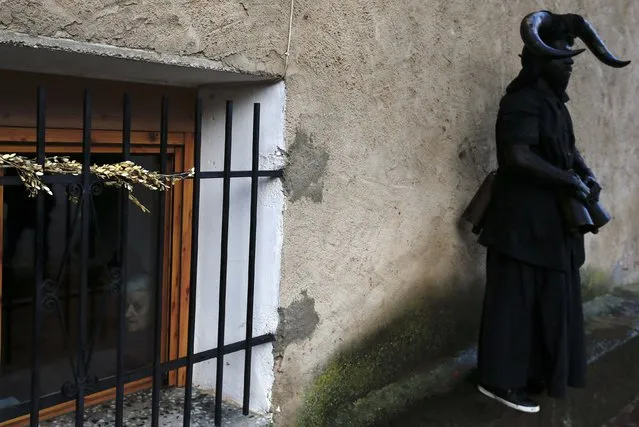
A woman reacts upon seeing a “Diablo de Luzon” (Luzon Devil) outside her window during carnival celebrations in Luzon February 14, 2015. The “Diablos” cover themselves in a mixture of soot and oil and adorn their heads with black stained bull horns as they parade throughout the village with cowbells clanging around their waist to expel the evil spirits. To make their appearance even more fearsome the devils often carry fake teeth made out of raw potatoes. They dance around Luzon and smear their black grease on revellers faces. The only people free from the attack of the “Diablos” are those who dress up as “Mascaritas”. They are characters dressed in traditional women clothing with their faces covered with a white cloth. To the beat of traditional music the “Diablos” and the “Mascaritas” parade throughout the village in the afternoon in this carnival tradition that is thought to have pre-Christian origins. (Photo by Sergio Perez/Reuters)
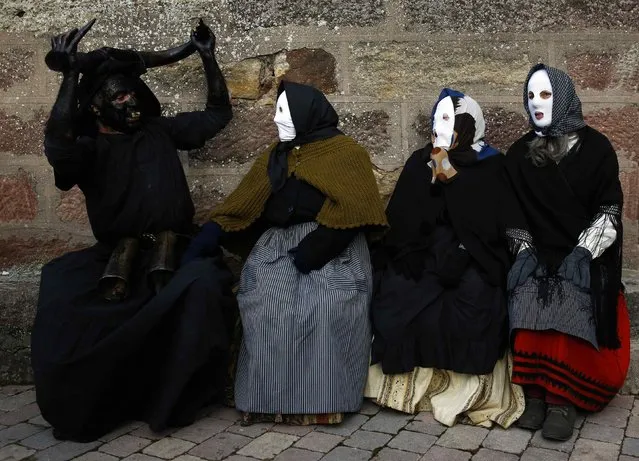
A reveller dressed as a “Diablo de Luzon” (L) (Luzon Devil) sits next to others dressed as “Mascaritas” during carnival celebrations in Luzon February 14, 2015. (Photo by Sergio Perez/Reuters)
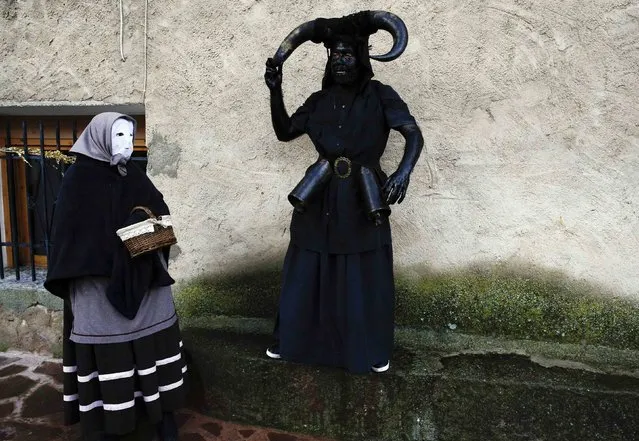
Revellers, dressed as “Mascaritas” (L) and a “Diablos de Luzon” (Luzon Devils), stand during carnival celebrations in the village of Luzon February 14, 2015. (Photo by Sergio Perez/Reuters)
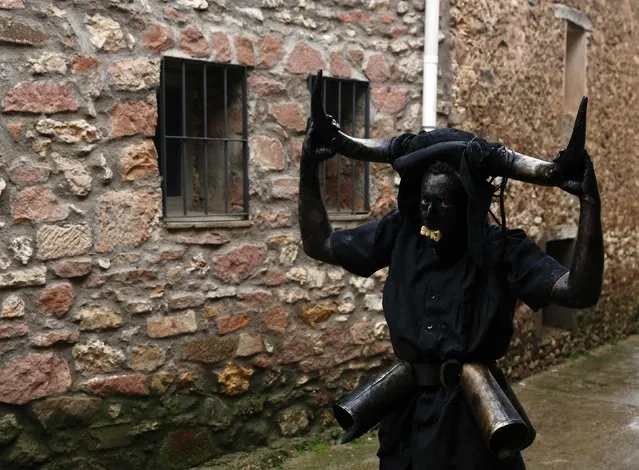
A reveller, dressed as “Diablos de Luzon” (Luzon Devils), walks through the village during carnival celebrations in the village of Luzon February 14, 2015. (Photo by Sergio Perez/Reuters)
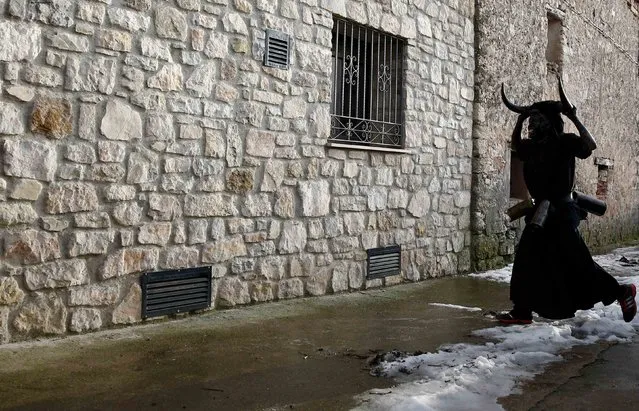
A reveller, dressed as “Diablos de Luzon” (Luzon Devils), walks through the village of Luzon during carnival celebrations February 14, 2015. (Photo by Sergio Perez/Reuters)
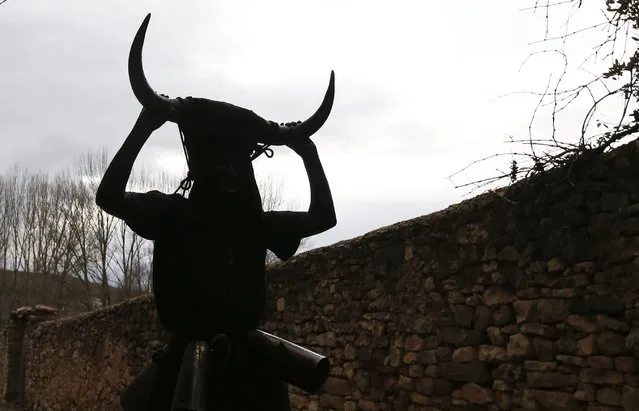
A reveller, dressed as “Diablos de Luzon” (Luzon Devils), walks through the village of Luzon during carnival celebrations February 14, 2015. (Photo by Sergio Perez/Reuters)
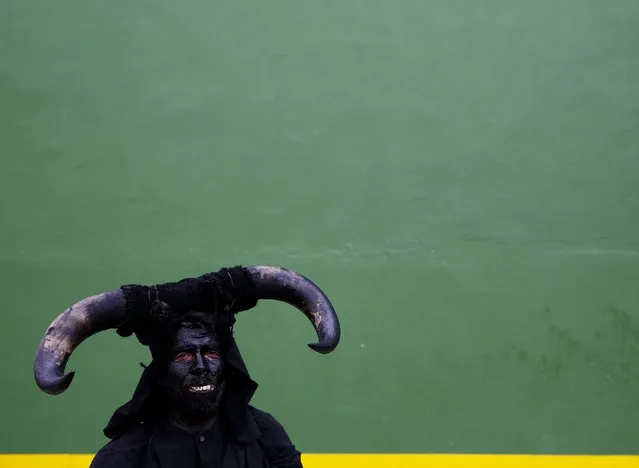
A reveller, dressed as “Diablos de Luzon” (Luzon Devils), stands during carnival celebrations in the village of Luzon February 14, 2015. (Photo by Sergio Perez/Reuters)
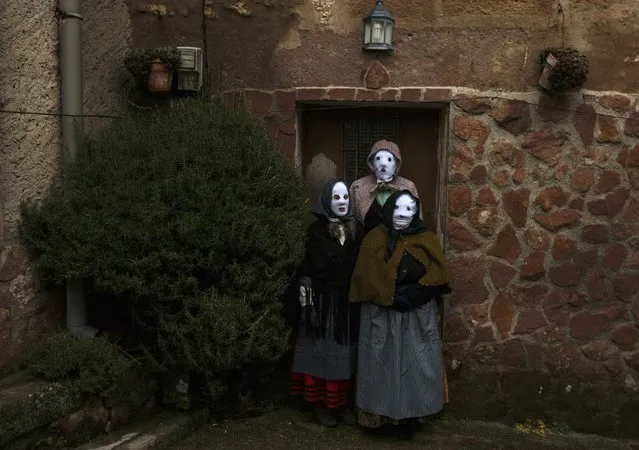
Revellers, dressed as “Mascaritas”, stand during carnival celebrations in the village of Luzon February 14, 2015. (Photo by Sergio Perez/Reuters)
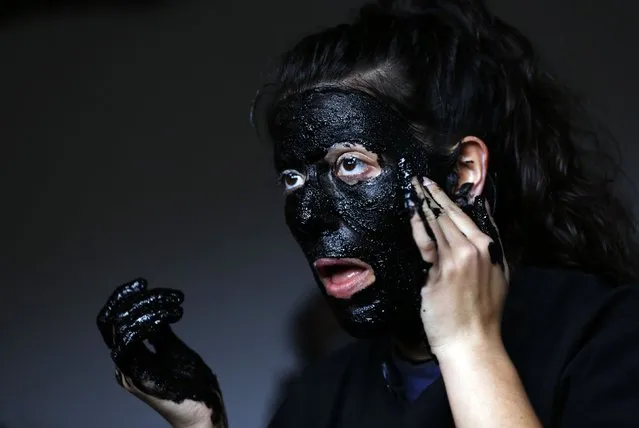
A reveller covers her face in soot and oil as he prepares to become a “Diablo de Luzon” (Luzon Devil) during carnival celebrations in the village of Luzon February 14, 2015. (Photo by Sergio Perez/Reuters)
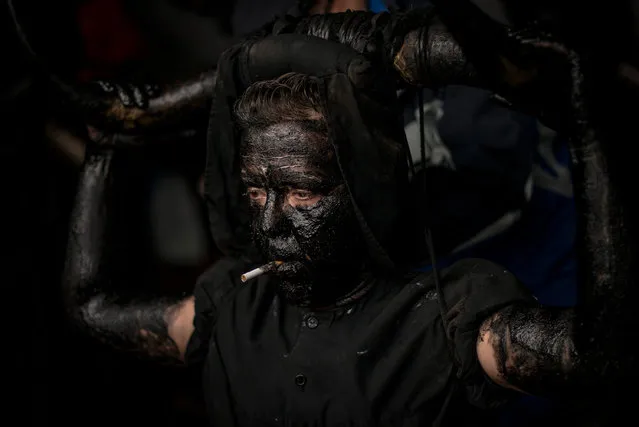
A man paints his face with oil and soot as he dresses up as a devil to join a carnival festival on February 14, 2015 in Luzon, Spain. (Photo by David Ramos/Getty Images)
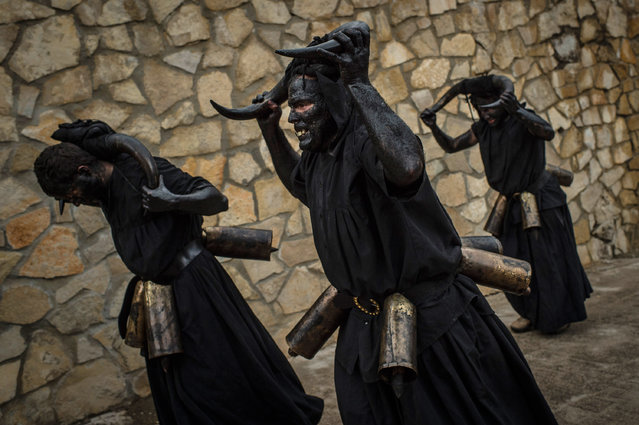
People with his face covered in oil and soot and carrying bull horns representing a devil join a carnival festival on February 14, 2015 in Luzon, Spain. (Photo by David Ramos/Getty Images)
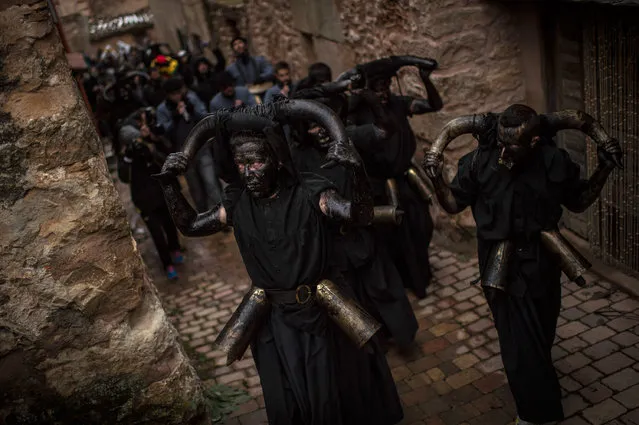
People with his face covered in oil and soot and carrying bull horns representing a devil join a carnival festival on February 14, 2015 in Luzon, Spain. (Photo by David Ramos/Getty Images)
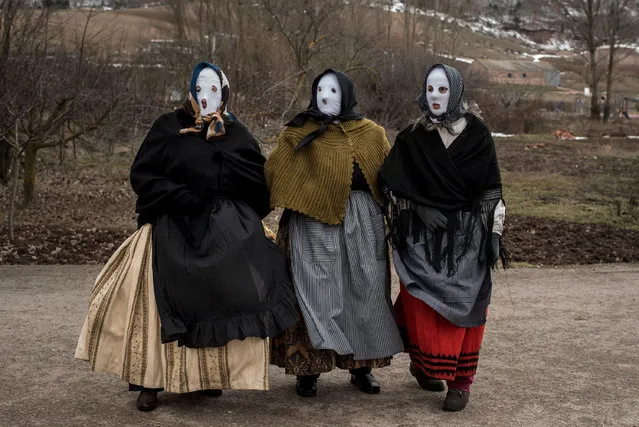
People with their faces covered with a mask know as “Mascarita” (mask) pose for a picture as they join a carnival festival on February 14, 2015 in Luzon, Spain. (Photo by David Ramos/Getty Images)
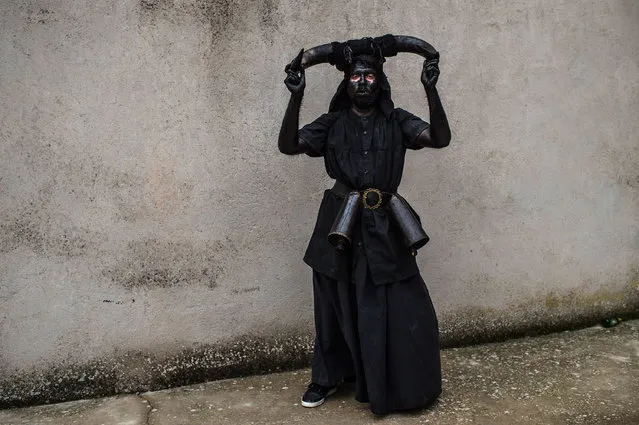
A man with his face covered in oil and soot and carrying bull horns representing a devil poses for a picture as he joins a carnival festival on February 14, 2015 in Luzon, Spain. (Photo by David Ramos/Getty Images)
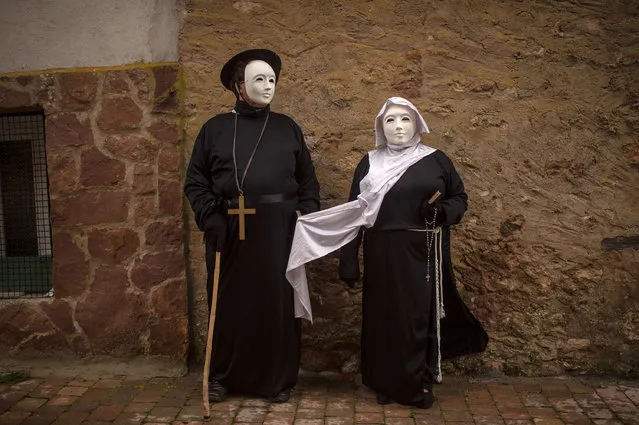
People dressed up as a cure and nun pose for a picture as they join a carnival festival on February 14, 2015 in Luzon, Spain. (Photo by David Ramos/Getty Images)
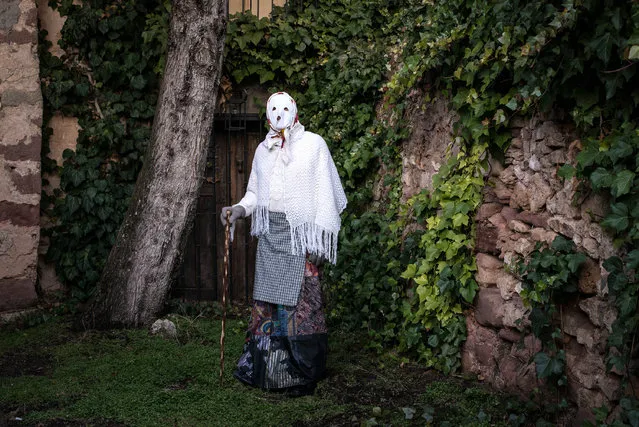
A man with his face covered with a mask know as “Mascarita” (mask) poses for a picture as he joins a carnival festival on February 14, 2015 in Luzon, Spain. (Photo by David Ramos/Getty Images)
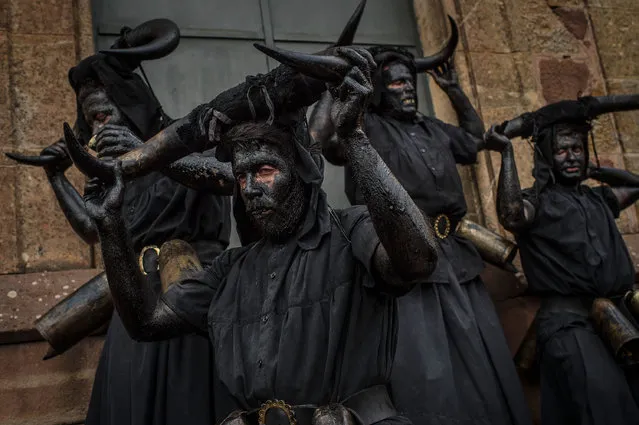
People with their face covered in oil and soot and carrying bull horns representing a devil join a carnival festival on February 14, 2015 in Luzon, Spain. (Photo by David Ramos/Getty Images)
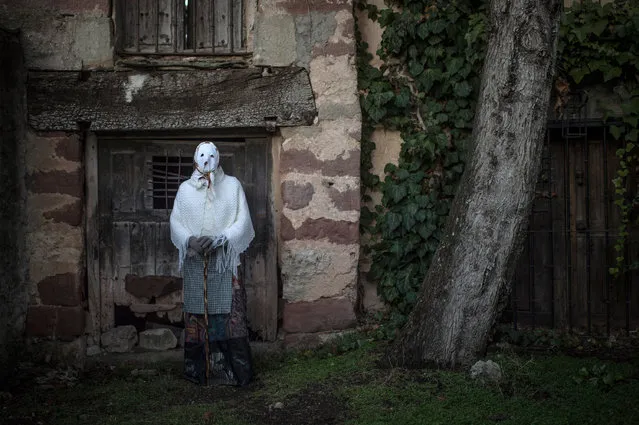
A man with his face covered with a mask know as “Mascarita” (mask) poses for a picture as he joins a carnival festival on February 14, 2015 in Luzon, Spain. (Photo by David Ramos/Getty Images)
15 Feb 2015 15:09:00,
post received
0 comments
